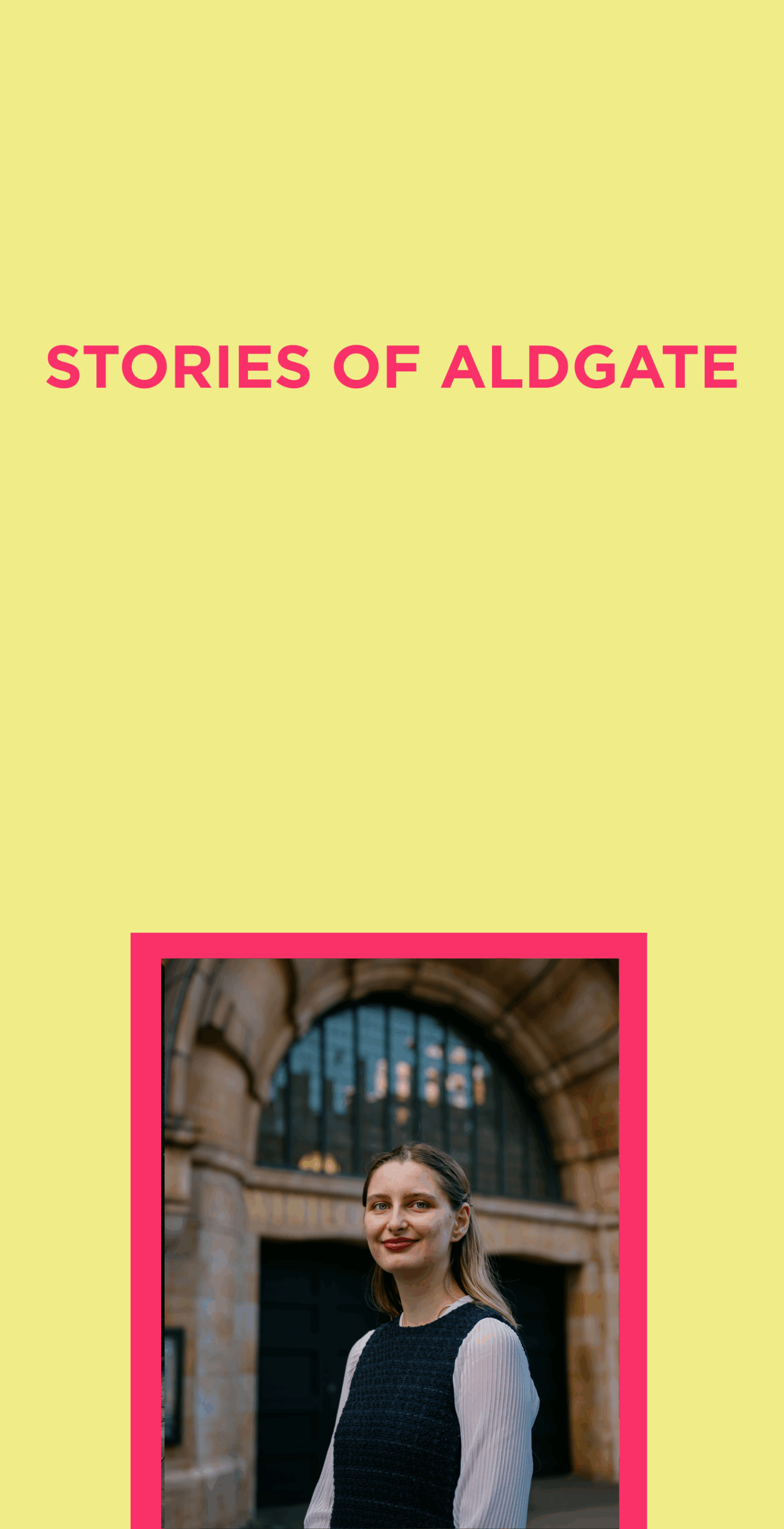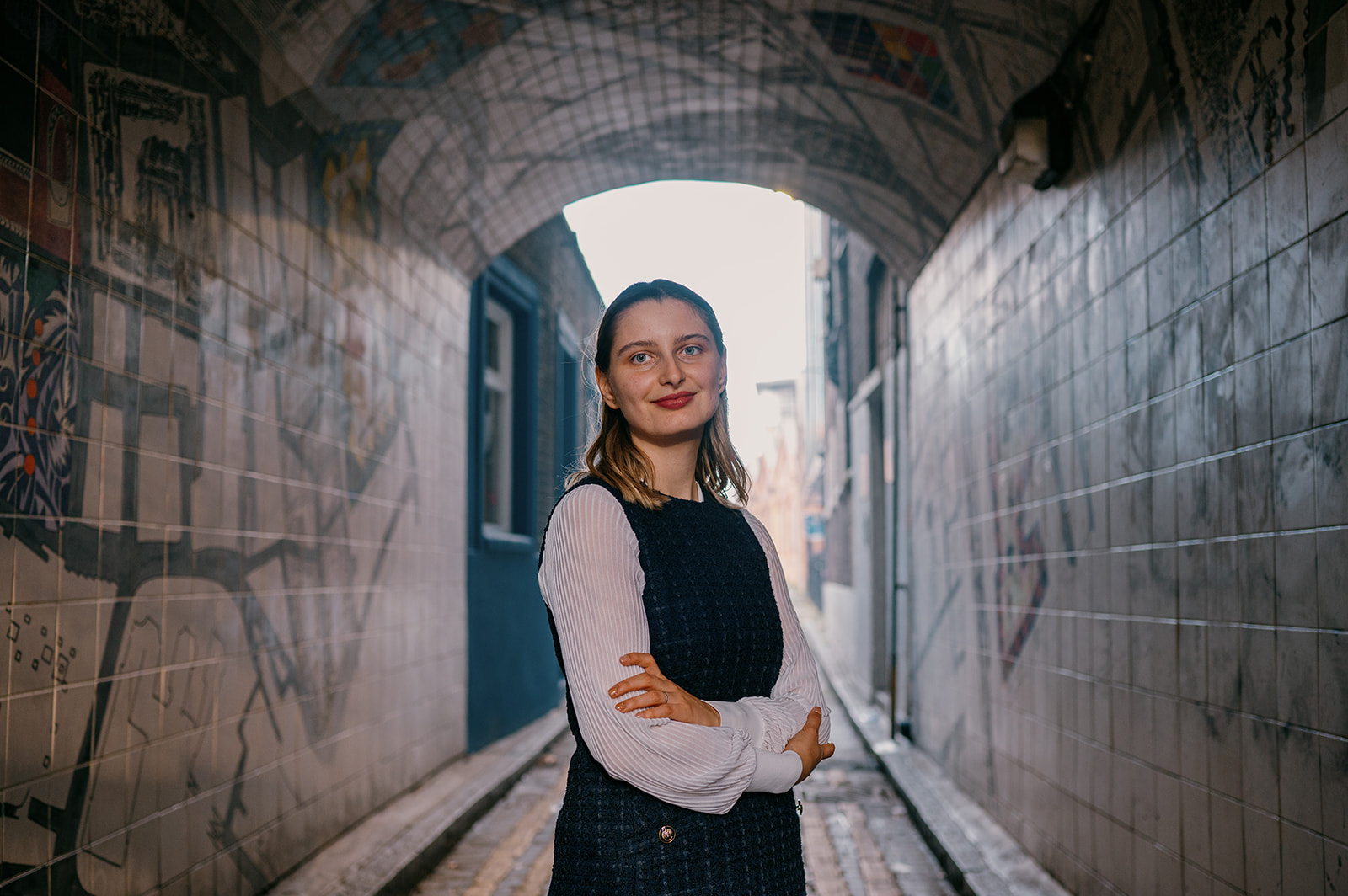Or you can read Gabriela’s story below:
The clock ticks relentlessly. As I sit hunched at the desk, it’s only an hour. I tell myself just an hour. All I must do is be there. My eyes start to the clock again. Just five minutes to 10. The idea of being early paralyzes me. What if I must speak? What would I say? What if I trip over my words? Or worse. What if they ask me to present the project?
I just press the button whispering a silent prayer that maybe if someone else is there, someone to help me just fade into the background.
The tutor’s voice takes over steady and grounding. I relax as they dive into today’s task. Sound mapping for the White Chapel Art Gallery Project.
The morning air bites my skin as I stand on a quiet street in Aldgate, my breath visible in the cold. It’s early, too early for the streets to be lively, and the pandemic has only deepened the eerie stillness. Armed with my phone and the surge of determination I make my way through the Whitechapel labyrinth of street, Whitechapel High Street, Commercial Street, Goulston Street. I stand still for a minute at each location holding my phone steady with my fingers, tingling from the cold.
I focus on the sounds around me. Some streets are busier, filled with faint echoes of distant footsteps. Others feel like they’ve been dipped in tranquillity. Who would have thought silence has a sound. Each street feels like it carries its own signature, a soundscape uniquely to its own.
It fascinates me this invisible thread, tying spaces and identity together. It’s as though the streets are whispering their secrets, telling me to uncover more. The sounds awaken a hunger to connect this place’s present to its past. I find myself wandering into the archives in the library, piecing together its history, maps, photographs, records. They offer glimpses into the story of Whitechapel, but they feel incomplete.
I realise what I want isn’t just a historical record. I want this project to be about the people who live here, who have lived here, their stories, their lives. But how could I possibly ask them, a lump rises in my throat at the thought of speaking to strangers? Especially now in the middle of the pandemic, I can barely muster the courage to talk to my classmates, let alone approach people in the streets.
I search online for stories from Whitechapel. To my surprise, there is a wealth of it. Chat groups, interviews, even books, chronicling memories of this place. One group catches my eye. Before I can overthink it, I composed a post, introducing my project and inviting everyone willing to share their stories to reach out. It’s late at night when I hit post. Exhaustion tugging at me.
The following day, my phone buzzes, groggily I check it and my heart skips a bit. So many people have responded. Their comments, messages, and offers to share their stories pour in like a flood, and for the first time in weeks, I feel a spark of belonging.
I’m amazed at how eager and open people are to share their stories. There is a vulnerability in their words, but it’s not fragile, it’s powerful, raw and full of longing. Their openness inspires me to be open as well, and soon our conversations are infused with empathy, care, and the surprising gentleness. These exchanges become a space where stories aren’t just told, they’re felt, woven together, in a quiet tapestry of understanding.
I find myself marvelling that the impact these stories could have, not just on me, but on anyone who hears them. How could I capture this emotion, this richness in my project? I’m just an interior designer. How could I possibly reflect something so deeply human, so brimming with emotions, yet the challenge excites me. I start to think beyond the walls and the floors beyond the tangible elements of design. What if I could use the stories to inspire the community today? What if the project could become a bridge? Connecting the past to the present, honouring the lives that shaped this place while inspiring those who live here now, the fear that once creeped me, the loneliness that shadow, my every step starts to fade into the background.
Over the next few weeks, I uncover a treasure of memories, tales of everyday life, of laughter echoing down narrow streets of vendors, calling out their wares, stories of unforgettable figures who once roamed the cobblestone of Whitechapel.
These stories I realise aren’t just relics of the past. They are a legacy, a gift that deserves to be preserved and shared. And slowly the idea takes shape. A space that doesn’t just tell stories, but invites people to fill them, to live them a threshold, not only to Whitechapel Art Gallery, but to its soul.
I am waiting for the class to start again, but this time anticipation courses through me and my heart pounds relentlessly in my chest, but the fear doesn’t overwhelm me anymore. The clocks strikes 10, and I joined the meeting. Restlessness bubbles under my skin as I wait for the tutors to ask about our progress. When they do, I don’t hesitate. Words spill out of me, unstoppable and alive.
I tell them everything about the stories I’ve heard, the lives I’ve glimpsed, and the beauty I’ve found in the quiet voices of Whitechapel. As I speak, I forget my nerves entirely. The inspiration I feel burns too brightly for fear to shadow it. My tutor looks at me with a thoughtful expression. Her lip curling into a smile. Gabriela, she says finally, this is like a quiet revolution. You should name your project the quiet revolution.
My ears hum. My eyes sting with tears, and my chest swells with emotion.
The title doesn’t just encapsulate my project. It feels like it encompasses it.
My journey, my purpose. I realise in that moment that I don’t need to shout to make a difference. My voice, even in its gentleness, can carry power. But stories, our stories, however softly spoken, can reverberate and inspire.
We don’t need to be loud to be heard. We can change the world with care, with kindness, and with quiet courage.
And so the quiet revolution begins.




